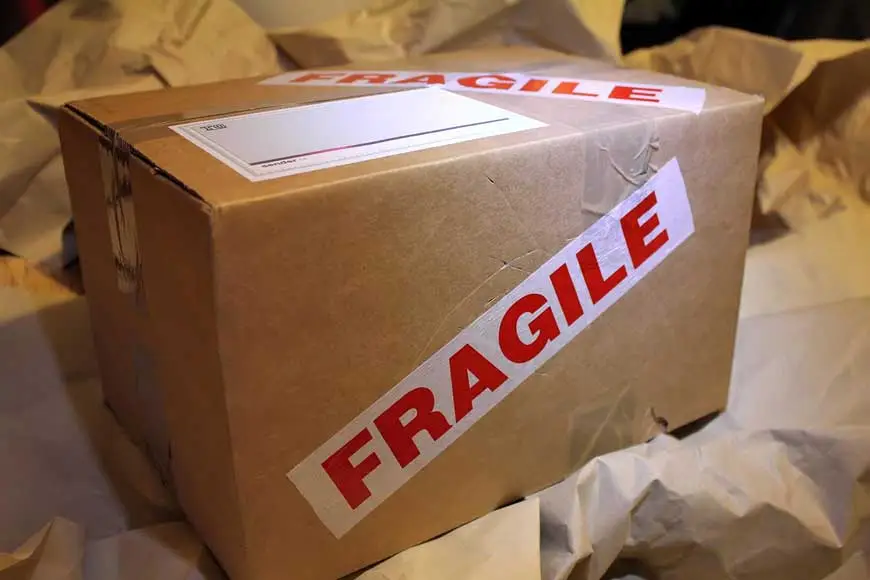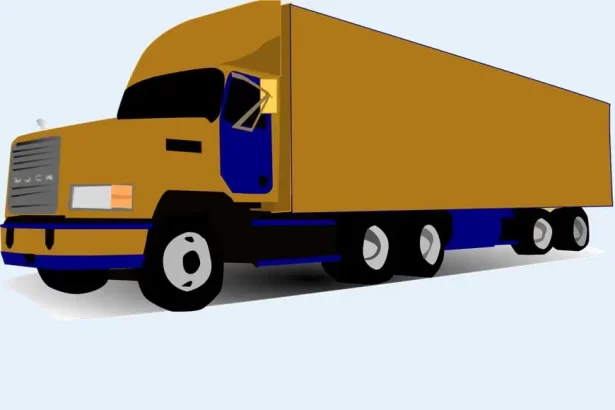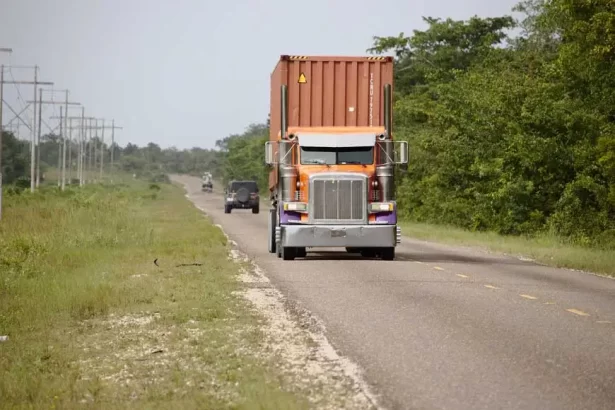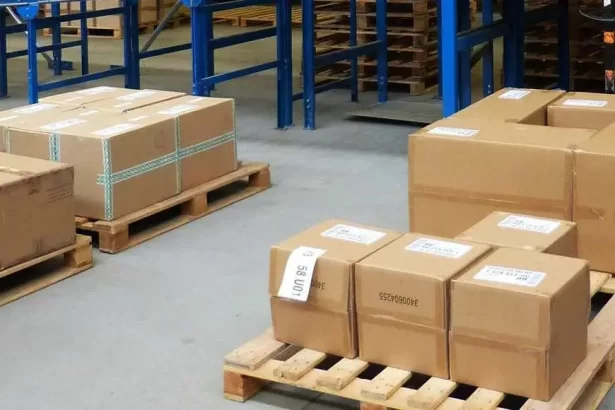Packaging is among the important, if not the most important, steps in freight and cargo shipping. That is because how well your shipment is packaged will determine its condition after shipping. Every shipper wants their load to arrive at the designated pickup or delivery point in pristine condition which will be primarily determined by the packaging. That means not only will good packaging secure your shipment, but it will also determine its final condition at the end of the shipping process.
Freight packaging is among the core services at Jupiter Transportation LLC, a transport logistics company available throughout the USA and the East African Region. This article seeks to inform you all about packaging, that is, the different types of shipment packages, different types of packaging methods, as well as teach you a few tips and tricks involved in the industry. Keep reading the article to gain a better understanding of this important service in shipment.
Packaging in freight and cargo handling means putting your shipment in a suitable container or wrapping it in a suitable material to ensure that it gets to the required destination in good condition. To ensure that your shipment is protected from unexpected damage, it is important to get the packaging part right. That is why it is highly advised to have professionals like Jupiter Transportation LLC do the packaging for you. It is the surest way to ensure your shipment is packaged the right way using the right material and placed in the right equipment.
Before you know about the different packaging equipment and material, you should first learn about the different types of shipping packages. That will enable you to know the best way to pack your shipment.
Types of Shipment Packages
The following are the different types of shipments offered by Jupiter Transportation LLC:
1. Less than a truckload (LTL) shipments
LTL shipments is one of the several types of shipments offered by Jupiter Transportation LLC. LTL shipments are shipments that do not take the whole space in a truck while hauling. It means that your shipment will be combined with other shipments from other carriers’ customers. You will only pay for the space taken up by your shipment in the truck. LTL shipments are usually between 150 lbs (68 kg) and 150,000 lbs (68,000 kg).
The main reason for correct packaging is cargo safety, not just for your shipment, but for others as well. In LTL shipping, your freight will be on a truck with a number of other people’s shipments. In order to protect all the freight inside the truck through the pickup and delivery processes, having the right packaging is a must.
In LTL shipments, pallets are the most common type of package. Pallets come in different sizes and you should indicate your size to your carrier before pickup. While some items can be strapped directly to the pallet, most items should be boxed or crated.
A standard LTL shipment will involve a lot of movement from pickup to delivery. It will change hands and trucks many times before the final destination. You should therefore ensure that the shipment is properly secured before pickup.
2. Truckload Shipments
Jupiter Transportation LLC also offers truckload shipments. Truckload shipments refer to those shipments that will take up the whole space in a truck. It usually means that the whole truck will only be shipping your cargo. Although the carrier truck may have more than one container belonging to different customers, a truckload shipment will be shipped to its destination using the same truck. There will be no changeover as is the practice in LTL shipments.
Although truckload shipping is more secure against damages to your shipment, the usual packaging methods used in LTL shipments should also be applied. Jupiter Transportation LLC will palletize your freight and make sure to note whether your items can be stacked or not.
Jupiter Transportation LLC advises that before scheduling any pickup, you should confirm whether the carrier supplies straps and tarps. Make sure that your shipment is properly packaged to avoid contamination from liquids and other materials in case the carrier truck experiences an accident. You’ll need proper packaging for every kind of large flatbed load, even if it’s not a pallet or crate.
3. Parcel and small package shipments
Parcels and small package shipments are also an integral part of Jupiter Transportation LLC’s packaging operations and they refer to those shipments that are less than 150 lbs (68 Kg). Because of the limited weight, there are no crates or pallets involved. That is because any movement can easily be done manually by the carrier personnel, which means there will be no forklifts involved during transfers unlike in LTL shipments.
Parcel shipping doesn’t use freight class when it comes to rates, so you won’t have to worry if your packaging is affecting your freight quote. When packaging your small package shipment just use a standard shipping box. At Jupiter Transportation LLC parcels and small packages are packaged depending on the needs of the shipment. You should ensure the safety of your shipment depending on its fragility by using more padding, bubble wrapping, and packing tape.
Packaging Materials Used at Jupiter Transportation LLC
Now that you know about the different types of shipment packages that you can use to ship your freight, it is time to know about the different materials Jupiter Transportation LLC uses to securely pack your shipment. The following are the common materials used by Jupiter Transportation LLC in packaging your shipment:
1. Pallets

Pallets are the first packaging material Jupiter Transportation LLC will consider for shipping large items because they’re sturdy and provide solid foundations for single- or multi-unit loads. Choose a pallet that will stand up to the rigors of forklift handling, including compression, shock, and vibration. The best pallets are wood and plastic ones since they provide sufficient strength and stability to your shipment. Plastic pallets are another good option because they’re sturdy and reusable, but they can get slippery. They can also be heavier than wood, so consider that if weight is an important factor to you.
When choosing a pallet, Jupiter Transportation LLC considers the following:
- Strength. A pallet needs to be strong enough to support the weight of the load it’s carrying throughout storage and shipment. Strength comes from the types of materials you use and the way the pallet is constructed.
- Firmness. Pallet materials need to be stiff enough to resist bending and deforming over time. When pallet deck boards start to deform, the integrity and stability of the entire load is compromised. Increasing board thickness or choosing a pallet with an extra stringer (horizontal support board) can increase stiffness.
- Durability. During shipment, palletized products are usually moved with equipment, stacked under other loads, and faced with environmental fluctuations. Choose a durable pallet with adequate top board spacing so forklift blades will not impact the product.
- Usefulness. The strongest, stiffest, most durable pallet in the world is only useful if it can be moved with standard equipment. Jupiter Transportation LLC will choose a pallet that conforms with industry standards to ensure it can be transported efficiently.
- Cost. You have to find the right balance of cost and quality when choosing a pallet. Jupiter Transportation LLC will consider your budget and the value of the product you’re shipping. If you’ll be receiving the pallet back, it might be worth investing more to have a pallet you can reuse multiple times.
2. Crates

Jupiter Transportation LLC also uses wooden crates as material for shipment packaging. They are a good alternative to pallets for the shipping of large items. The size and weight of the shipment help in deciding on the crate configuration and style, including what packaging materials and fastener types to use. Crates are often used for items that are big, bulky, and require extra protection from vibration, shock, and shifting during transport. They’re also used to ship items that need an extra level of security because they’re usually harder to open than palletized loads.
Packaging using crates has some distinct benefits. Some of these benefits are:
- Stackable for optimized shipping and storage space.
- Can easily be custom-made in order to fit the shipment.
- They are reusable, which means the shipper can save the costs involved in procuring new crates.
- Strong and sturdy for maximum shipment protection and security.
3. Freight boxes
Freight boxes are also commonly used at Jupiter Transportation LLC in shipment packaging. Also referred to as bulk bins, cargo boxes, or bulk containers, freight boxes are larger and stronger than your average wooden crates. They are usually made from corrugated cardboard, wood, or plastic, and they come in different sizes to accommodate a lot of different products.
Since they are larger than normal wooden boxes and crates, they are also common in the shipment of larger items. Most freight boxes are used as packaging material for small appliances and furniture; retail goods and clothing; automotive parts; and large pieces of art.
These boxes give shippers unique benefits like:
- Ability to ship many small shipments together which saves on the shipping costs.
- Easy pricing for the carriers.
- They are can be easily used with shipping pallets since they come n standard sizes which correspond to pallet sizes.
4. Baggings

Jupiter Transportation LLC also uses bags as packaging material for special shipments. Some of these special shipments are fertilizers, cereals (rice, corn, wheat), seeds, dried fruits, sugar, coconut, coffee, fresh vegetables, and flour. Packaging using bags is very delicate and needs the shipper to be careful to avoid puncturing the bags during transit.
To securely ship using bags, Jupiter Transportation LLC uses a corrugated cardboard tray on top of the pallet under the bottom bag to help stabilize the bags. A second tray to cover the whole load will then be used. Sometimes, cardboard is used to further safeguard the sides of the bags. The risk of puncturing these bags during transit is the greatest disadvantage of using bags in packaging, as the punctures may cause great losses to the shipper and result in claims to the company.
5. Drums and pails

Drums and pails are also popular packaging materials at Jupiter Transportation LLC. These packaged items often contain liquid, making them susceptible to shifting. Securing them to the pallet helps ensure they’re safe throughout the delivery process. Jupiter Transportation LLC ensures that the drums used are new as used drums increase the risk of leakages during transit.
Drums should be properly secured to the pallets to minimize the effects of shaking during transit. Some of the liquids shipped using drums might be volatile, and the shipper needs to declare that to the company to avoid any accidents during hauling.
6. Transit cases

Jupiter Transportation LLC also uses transit cases as packaging material. They are considered a more secure mode of shipping, especially for sensitive shipments since they can be securely locked. The company will ensure that the transit cases are properly secured in pallets to avoid slipping and unnecessary movement during transit. Transit cases are used for shipping small items and are more expensive than other packaging materials due to the materials used to make them.
Tips and Tricks for Successful Freight Packaging
Due to the importance of proper packaging in freight and cargo hauling, there are some tips and tricks which are helpful to the shipper. Knowing about these little tricks and tips is helpful to every shipper as it ensures that the shipment is properly secured and will reach its target destination safely and in good condition.
Jupiter Transportation LLC considers the following information useful for both the shipper and carrier in ensuring safe and hassle-free freight shipping.
Internal and external packaging
Knowing the difference between internal and external packaging in freight shipping is very important, especially to the shipper. Both internal and external packaging are equally important when it comes to the safe shipment of freight. Shippers should know that boxes, crates, drums and pails, spools and reels, pipes, and transit cases only protect shipments from outside damage, but they may not totally protect the shipment.
Having the correct materials inside your box of packaged freight will keep your cargo protected on its journey. Some examples of internal packaging include bubble wrap, corrosion protection packaging material, foam cushioning, honeycomb, loose fill, and paper pads. The shipper should determine the best internal packaging material for their items.
Always consider pallets
How easily the shipment will be palletized should be on every shipper’s mind. Every piece of packaged freight must be movable by forklift, which means much of what you ship needs to fit on a pallet. Pallets are helpful when packaging and preparing your cargo for the shipment because they can help consolidate your load. They also allow for optimal ease of handling during the movement in between transit, reducing the potential for damage.
Stackability
You should always ensure that your shipment is stackable. That means thinking like a carrier driver when packaging your freight. You want everything in the back of your truck to be uniform and safe. Pallet overhang, misaligned column stacks, and incorrect size and weight distribution can weaken container strength and lead to damage.
Carriers prefer column stacking since interlocked stacking reduces compression strength which makes shipping hectic. The shipper should therefore ensure that the edges and corners of the packaged shipment match up correctly to avoid misalignment.
Overlength and odd-shaped shipment
Overlength and odd-shaped shipments are a major headache to the majority of carriers. The carrier will have limitations for overlength freight and the shipper should know these limitations before pick up to avoid rejection. When you have overlength items to ship or need to ship other oddly shaped items, there are packaging steps you can take to ensure your freight is properly packaged and secured.
Additional shipment security
There are further steps that a shipper should take to enhance the security of their shipment. Banding, stretch wrap, and shrink wrap are great ways to package your freight for safety and security. Banding is typically used to secure bundled loads to pallets. Stretch wrap is a great choice because it provides full coverage protection, and stretch wrap can keep your load uniform, preventing loss. Plastic shrink wrap is another alternative for keeping a load together and uniform, and the more layers you add, the stronger the protection.
Shipping labels and precautionary markings
The shipper should ensure that all the necessary labels and other precautionary labels are clearly noticeable on the shipment. Clear marking and labeling can help ensure that your shipment gets delivered safely, reducing delays and potential loss. Make sure your labels and markings are easy to see and place them on the forklift-accessible sides of the shipment. Remember that properly labeling and marking your shipment will avoid losses occasioned by misinformation by the carrier.
Conclusion
As has been explained above, proper packaging of shipment is important since it determines the condition in which the shipment will arrive at its destination. The kind of packaging material to be used will depend on the nature of the cargo. Although packaging may be costly to the shipper, the expense is always worth it when potential losses due to poor packaging are considered.
It is, therefore, extremely important for shippers to consider professional packaging services for their shipments to avoid losses due to poor packaging. In the USA and all the East African countries, Jupiter Transportation LLC offers the best cargo packaging services. If you are in these areas and need professional packaging services, contact the company for a quotation and have your shipment properly packaged.




